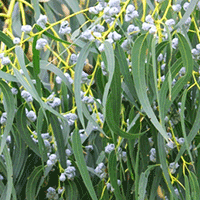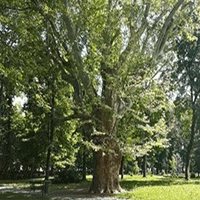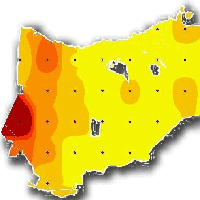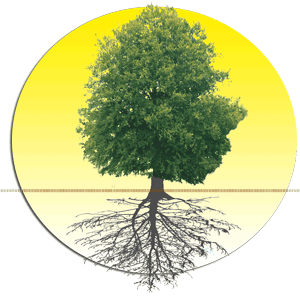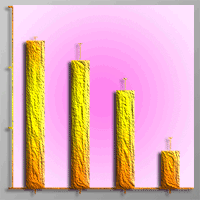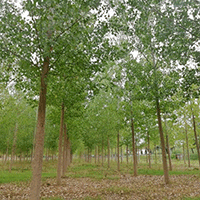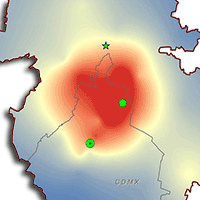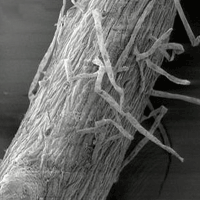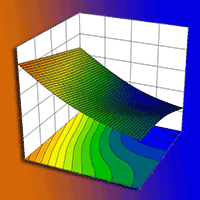Wastewater reclamation and reuse represent a feasible solution to meet the growing demand for safe water. An environmentally sustainable technology such as phytoremediation is targeted for the reclamation of polluted waters. To this end, the capability of different plant species to tolerate and accumulate pollutants has to be investigated. In this work, eucalypt plants were studied by analysing biometric, physiological, and biochemical parameters related to cadmium (Cd) tolerance and accumulation in two clones (“Velino ex 7” and “Viglio ex 358”) of Eucalyptus camaldulensis Dehnh. × E. globulus subsp. bicostata (Maiden, Blakely & J.Simm.) J.B. Kirkp exposed to 50 μM CdSO4 under hydroponics for three weeks. The results indicated that both eucalypt clones have a valuable tolerance to cadmium, expressed as the tolerance index (Ti). Biometric investigations showed that, regardless of the clone, the metal exposure affected most parameters related to biomass allocation and leaf growth. On the contrary, significant differences were found between the clones with respect to the chlorophyll content and the Chl a to Chl b ratio. These findings were also confirmed from the analysis of chlorophyll fluorescence transient (OJIP) using the JIP test. Cadmium accumulation occurred in both clones and in particular in the roots, with a poor amount of metal reaching the aerial parts, and the Velino clone showed the highest Cd accumulation. The metal uptake ratio and the phytoextraction efficiency highlight a good Cd phytoremoval ability, especially for the Velino clone. The results are discussed taking into account that, in wastewater phytoremediation systems, root biomass can be completely harvested allowing for the removal of the absorbed metal. Finally, the notable tolerance to submersion and the large environmental adaptability of eucalypt suggest that this plant species represents an interesting candidate for the phytoremediation of Cd-polluted wastewaters.
Keywords
, , , , ,
Citation
Iori V, Pietrini F, Bianconi D, Mughini G, Massacci A, Zacchini M (2017). Analysis of biometric, physiological, and biochemical traits to evaluate the cadmium phytoremediation ability of eucalypt plants under hydroponics. iForest 10: 416-421. - doi: 10.3832/ifor2129-009
Academic Editor
Claudia Cocozza
Paper history
Received: May 30, 2016
Accepted: Nov 11, 2016
First online: Mar 24, 2017
Publication Date: Apr 30, 2017
Publication Time: 4.43 months
© SISEF - The Italian Society of Silviculture and Forest Ecology 2017
Open Access
This article is distributed under the terms of the Creative Commons Attribution-Non Commercial 4.0 International (https://creativecommons.org/licenses/by-nc/4.0/), which permits unrestricted use, distribution, and reproduction in any medium, provided you give appropriate credit to the original author(s) and the source, provide a link to the Creative Commons license, and indicate if changes were made.

Breakdown by View Type
(Waiting for server response...)
Article Usage
Total Article Views: 50904
(from publication date up to now)
Breakdown by View Type
HTML Page Views: 42487
Abstract Page Views: 3151
PDF Downloads: 4227
Citation/Reference Downloads: 23
XML Downloads: 1016
Web Metrics
Days since publication: 3173
Overall contacts: 50904
Avg. contacts per week: 112.30
Article Citations
Article citations are based on data periodically collected from the Clarivate Web of Science web site
(last update: Mar 2025)
Total number of cites (since 2017): 25
Average cites per year: 2.78
Publication Metrics
by Dimensions ©
Articles citing this article
List of the papers citing this article based on CrossRef Cited-by.
(1)
Borghi M, Tognetti R, Monteforti G, Sebastiani L (2007)Responses of
Populus × euramericana (
P. deltoides × P. nigra) clone Adda to increasing copper concentrations. Environmental and Experimental Botany 61: 66-73.
CrossRef |
Gscholar
(2)
Cocozza C, Vitullo D, Lima G, Maiuro L, Marchetti M, Tognetti R (2014)Enhancing phytoextraction of Cd by combining poplar (clone “I-214”) with
Pseudomonas fluorescens and microbial consortia. Environmental Science and Pollution Research 21: 1796-1808.
CrossRef |
Gscholar
(3)
Cocozza C, Trupiano D, Lustrato G, Alfano G, Vitullo D, Falasca A, Lomaglio T, De Felice V, Lima G, Ranalli G, Scippa S, Tognetti R (2015)Challenging synergistic activity of poplar-bacteria association for the Cd phytostabilization. Environmental Science and Pollution Research 22: 19546-19561.
CrossRef |
Gscholar
(4)
Dan TV, Krishnaraj S, Saxena PK (2000)Metal tolerance of scented geranium (
Pelargonium sp. ’ÂÂFrensham’): effects of cadmium and nickel on chlorophyll fluorescence kinetics. International Journal of Phytoremediation 2: 91-104.
CrossRef |
Gscholar
(5)
Dhillon KS, Dhillon SK, Thind HS (2008)Evaluation of different agroforestry tree species for their suitability in the phytoremediation of seleniferous soils. Soil Use and Management 24: 208-216.
CrossRef |
Gscholar
(6)
Fatta-Kassinos D, Kalavrouziotis IK, Koukoulakis PH, Vasquez MI (2011)The risk associated with wastewater reuse and xenobiotics in the agroecological environment. Science of the Total Environment 409: 3555-3563.
CrossRef |
Gscholar
(7)
Fine P, Rathod PH, Beriozkin A, Mingelgrin U (2013)Uptake of cadmium by hydroponically grown, mature
Eucalyptus camaldulensis saplings and the effect of organic ligands. International Journal of Phytoremediation 15: 585-601.
CrossRef |
Gscholar
(8)
Gallego SM, Pena LB, Barcia RA, Azpilicueta CE, Iannone MF, Rosales EP, Zawoznik MS, Groppa MD, Benavides MP (2012)Unravelling cadmium toxicity and tolerance in plants: insight into regulatory mechanisms. Environmental and Experimental Botany 83: 33-46.
CrossRef |
Gscholar
(9)
Gaudet M, Pietrini F, Beritognolo I, Iori V, Zacchini M, Massacci A, Scarascia Mugnozza G, Sabatti M (2011)Intraspecific variation of physiological and molecular response to cadmium stress in
Populus nigra L. Tree Physiology 31: 1309-1318.
CrossRef |
Gscholar
(10)
Gomes MP, Marques TCLLSM, Carneiro MMLC, Soares AM (2012)Anatomical characteristics and nutrient uptake and distribution associated with the Cd-phytoremediation capacity of
Eucalyptus camaldulensis Dehnh. Journal of Soil Science and Plant Nutrition 12: 481-495.
Online |
Gscholar
(11)
Gonzalez-Mendoza D, Espadasy GF, Santamara JM, Zapata-Perez O (2007)Multiple effects of cadmium on the photosynthetic apparatus of
Avicennia germinans L. as probed by OJIP chlorophyll fluorescence measurements. Zeitschrift fur Naturforschung C 62: 265-272.
CrossRef |
Gscholar
(12)
Guidi Nissim W, Voicu A, Labrecque M (2014)Willow short-rotation coppice for treatment of polluted groundwater. Ecological Engineering 62: 102-114.
CrossRef |
Gscholar
(13)
Harfouche A, Meilan R, Altman A (2014)Molecular and physiological responses to abiotic stress in forest trees and their relevance to tree improvement. Tree Physiology 34: 1181-1198.
CrossRef |
Gscholar
(14)
Iori V, Pietrini F, Cheremisina A, Shevyakova NI, Radyukina N, Kuznetsov VV, Zacchini M (2013)Growth responses, metal accumulation and phytoremoval capability in
Amaranthus plants exposed to nickel under hydroponics. Water, Air and Soil Pollution 224: 1450-1459.
CrossRef |
Gscholar
(15)
Iori V, Pietrini F, Massacci A, Zacchini M (2015)Morphophysiological responses, heavy metal accumulation and phytoremoval ability in four willow clones exposed to cadmium under hydroponics. In: “Phytoremediation: Management of Environmental Contaminants” (Ansari AA, Gill SS, Gill R, Lanza GR, Newman L eds). Springer International Publishing, Switzerland, vol. I, pp. 87-98.
CrossRef |
Gscholar
(16)
Iori V, Gaudet M, Fabbrini F, Pietrini F, Beritognolo I, Zaina G, Massacci A, Scarascia Mugnozza G, Zacchini M, Sabatti M (2016)Physiology and genetic architecture of traits associated with cadmium tolerance and accumulation in
Populus nigra. Trees 30: 125-139.
CrossRef |
Gscholar
(17)
Krause GH, Weis E (1991)Chlorophyll fluorescence and photosynthesis: the basic. Annual Review of Plant Physiology 42: 313-349.
CrossRef |
Gscholar
(18)
Kriedemann PF, Graham RD, Wiskich JT (1985)Photosynthetic dysfunction and
in vivo chlorophyll a fluorescence from manganese-deficient wheat leaves. Australian Journal of Agriculture Research 36: 157-169.
CrossRef |
Gscholar
(19)
Krupa Z, Baszynski T (1995)Some aspects of heavy metals toxicity towards photosynthetic apparatus - direct and indirect effects on light and dark reactions: a review. Acta Physiologiae Plantarum 17: 177-190.
Gscholar
(20)
Kummerová M, Zezulka Š Králová K, Masarovičová E (2010)Effect of zinc and cadmium on physiological and production characteristics in Matricaria recutita. Biologia Plantarum 54: 308-314.
CrossRef |
Gscholar
(21)
Li Y, Liu J, Liu Y, Li X (2009)Effects of EDTA on mechanism of lead accumulation in
Typha orientalis Presl. Bullettin of Environmental Contamination Toxicology 83: 553-557.
CrossRef |
Gscholar
(22)
Li S, Yang W, Yang T, Chen Y, Nia W (2015)Effects of cadmium stress on leaf chlorophyll fluorescence and photosynthesis of
Elsholtzia argyi a cadmium accumulating plant. International Journal of Phytoremediation 17: 85-92.
CrossRef |
Gscholar
(23)
Lichtentaler HK (1987)Chlorophyll and carotenoids pigments of photosynthetic biomembranes. Methods in Enzymology 148: 350-82.
CrossRef |
Gscholar
(24)
Lu Q, He ZL, Graetz DA, Stoffella PJ, Yang X (2011)Uptake and distribution of metals by water lettuce (
Pistia stratiotes L.). Environmental Science and Pollution Research 18: 978-986.
CrossRef |
Gscholar
(25)
Lux A, Opatrná J, Greger M (2004)Differences in structure of adventitious roots in
Salix clones with contrasting characteristics of cadmium accumulation and sensitivity. Physiologia Plantarum 120: 537-545.
CrossRef |
Gscholar
(26)
Mallick N, Mohn FH (2003)Use of chlorophyll fluorescence in metal-stress research: a case study with the green microalga
Scenedesmus. Ecotoxicology and Environmental Safety 55: 64-69.
CrossRef |
Gscholar
(27)
Mughini G, Alianiello F, Benedetti A, Mughini Gras L, Gras MA, Salvati L (2013)Clonal variation in growth, arsenic and heavy metal uptakes of hybrid
Eucalyptus clones in a Mediterranean environment. Agroforestry Systems 87: 755-766.
CrossRef |
Gscholar
(28)
Pietrini F, Iannelli MA, Montanari R, Bianconi D, Massacci A (2005)Cadmium interaction with thiols and photosynthesis in higher plants. In: “Advances in Plant Physiology” (Hemantaranjan A ed). Scientific Publishers, Jodhpur, India, vol. 8, pp. 313-326.
Online |
Gscholar
(29)
Pietrini F, Zacchini M, Iori V, Pietrosanti L, Bianconi D, Massacci A (2010)Screening of poplar clones for cadmium phytoremediation using photosynthesis, biomass and cadmium content analyses. International Journal of Phytoremediation 12: 105-120.
CrossRef |
Gscholar
(30)
Pietrini F, Iori V, Bianconi D, Mughini G, Massacci A, Zacchini M (2015)Assessment of physiological and biochemical responses, metal tolerance and accumulation in two eucalypt hybrid clones for phytoremediation of cadmium-contaminated waters. Journal of Environmental Management 162: 221-231.
CrossRef |
Gscholar
(31)
Sharma RK, Agrawal M, Marshall FM (2008)Heavy metal (Cu, Zn, Cd and Pb) contamination of vegetables in urban India: a case study in Varanasi. Environmental Pollution 154: 254-263.
CrossRef |
Gscholar
(32)
Singh S, Prasad SM (2015)IAA alleviates Cd toxicity on growth, photosynthesis and oxidative damages in eggplant seedlings. Plant Growth Regulation 77: 87-98.
CrossRef |
Gscholar
(33)
Stoláriková M, Vaculík M, Lux A, Di Baccio D, Minnocci A, Andreucci A, Sebastiani L (2012)Anatomical differences of poplar (
Populus × euramericana clone I-214) roots exposed to zinc excess. Biologia 67: 483-489.
CrossRef |
Gscholar
(34)
Strasser R, Tsimilli-Michael M, Srivastava A (2004)Analysis of the chlorophyll a fluorescence transient. In: “Chlorophyll a fluorescence. Advances in photosynthesis and respiration” (Papageorgiou G, Govindjee eds). Springer, Netherlands, pp. 321-362.
CrossRef |
Gscholar
(35)
Vassilev A, Berova M, Zlatev Z (1998)Influence of Cd
2+ on growth, chlorophyll content, and water relations in young barley plants. Biologia Plantarum 41: 601-606.
CrossRef |
Gscholar
(36)
Vassilev A, Perez-Sanz A, Semane B, Carleer R, Vangronsveld J (2005)Cadmium accumulation and tolerance of two
Salix genotypes hydroponically grown in presence of cadmium. Journal of Plant Nutrition 28: 2159-2177.
CrossRef |
Gscholar
(37)
Wang FY, Lin XG, Yin R (2007)Role of microbial inoculation and chitosan in phytoextraction of Cu, Zn, Pb, and Cd by
Elsholtzia splendens - a field case. Environmental Pollution 147: 248-255.
CrossRef |
Gscholar
(38)
Zacchini M, Pietrini F, Scarascia-Mugnozza G, Iori V, Pietrosanti L, Massacci A (2009)Metal tolerance, accumulation and traslocation in poplar and willow clones treated with cadmium in hydroponics. Water, Air and Soil Pollution 197: 23-34.
CrossRef |
Gscholar
(39)
Zhivotovsky OP, Kuzovkina JA, Schulthess CP, Morris T, Pettinelli D, Ge M (2011)Hydroponic screening of willows (
Salix L.) for lead tolerance and accumulation. International Journal of Phytoremediation 13: 75-94.
CrossRef |
Gscholar
(40)
Zurek G, Rybka K, Pogrzeba M, Krzyzak J, Prokopiuk K (2014)Chlorophyll a fluorescence in evaluation of the effect of heavy metal soil contamination on perennial grasses. PLOS One 9: e91475.
CrossRef |
Gscholar
